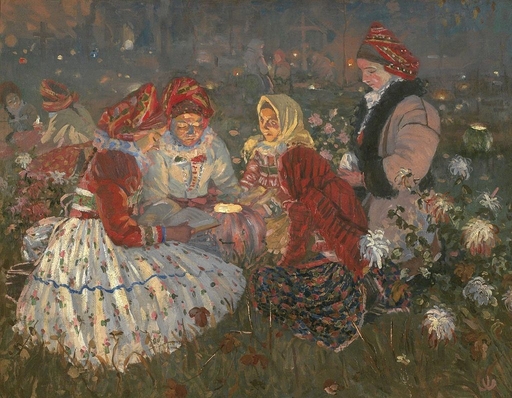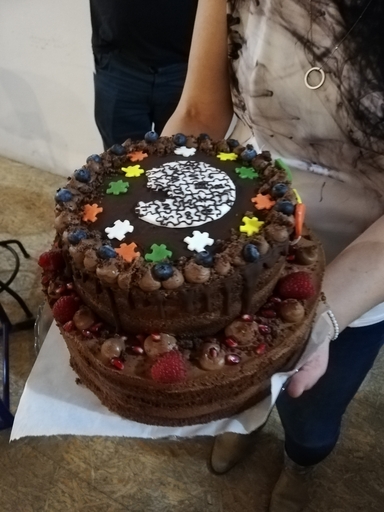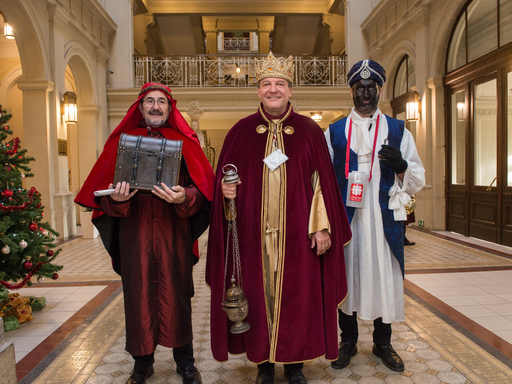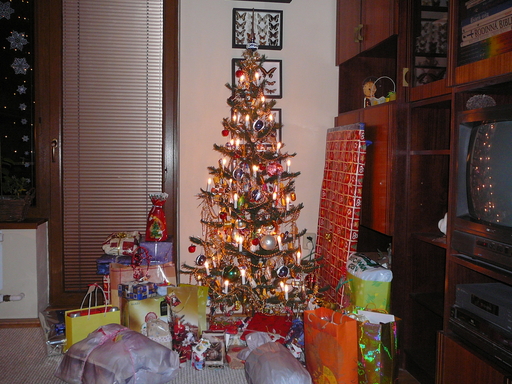
An approximately four-week period of time before Christmas during which the Christian Church prepared for the arrival of Christ. Nowadays it is a time before Christmas characterised by Advent concerts, decoration of the municipal Christmas tree, Christmas markets and preparation of gifts and sweets.

A day at the beginning of November, dedicated to the remembrance of dead ancestors, visiting their graves, decorating them and lighting candles.

The most widespread family feast days in the Czech Republic. They mark anniversaries of a person’s birth (birthday) and the feast day of the saint after whom a person is named (name day).

Traditional technique of textile printing with small white patterns typically on a blue background. It has been a part of intangible cultural heritage of UNESCO.

A supernatural folklore creature or a phenomenon from popular culture which scares people with its presence or actions.

A popular character in Czech fairy tales, with horns, a tail and a hoof, also often appearing in human form. Devils live in hell and try to obtain human souls. The tradition involving the devil, Saint Nicholas and the angel is still alive.

Celebrations of the end of the harvest season, whose expressions were used for emphasising the folk element at state events.

Folklore and mythical creature, reptilian in appearance, nowadays mostly known as the adversary of a brave hero, who saves the princess from dragon’s claws. It flies in the air, carries treasure and breathes fire.

A fairy-tale character representing a small man with moustache. In legends, one of the names for the spirit of the mines. The term is also commonly used for a human of short stature.
The most important Christian holiday, celebrating the resurrection of Jesus Christ, as well as a popular folk holiday. The so-called Good Friday and Easter Monday are also holidays in the Czech Republic.

A Christian holiday celebrated on 6 January, which marks the end of the Christmas holiday season. On this day, three carol singers dressed as the Biblical Three Magi may be seen.

A female creature that appears in folk stories. Nowadays, the term is associated with an attractive and fragile female character and is figuratively used for people as well (i.e. women and girls).

Creature of superhuman size and great, brute strength, known from legends, myths and fairy tales all over the world. He is usually feared by people, although he is not always hostile. Large people are also sometimes called giants.

A traditional slogan of Czech sports fans, typically accompanied by jumping and repeated chanting.

A legendary creature, the spirit of forests, whose name is derived from the words hejkání (shouting) and houkání (hooting). He lives in the forest, where people may hear him hoot, but answering him may cost them their health at the least.

A fairy-tale character, a prototype of a youth who sets off into the world and, in spite of the fact that he is generally thought to be stupid, often returns with riches.

A creature from folklore traditions, appearing in human homes or near them. The original purpose of household deities was to bring benefit to their masters. The ways that the now popular šotek, skřítek or rarášek are imagined have changed and they usually represent crafty anthropomorphic (resembling humans) creatures.

The most popular holiday in the Czech Republic. In religious families as well as in atheistic circles, Christmas is one of the most popular holidays in the year which, however, is increasingly atheistic and consumerist in character.
2016-2020 ABCzech.cz - © Filozofická fakulta Univerzity Karlovy
Content from this website may be used without permission only for personal and non-commercial purposes and with the source cited. Any other use is allowed only with the authors' consent.
This web application Sonic.cgi meets GDPR requirements. Current information can be found here.